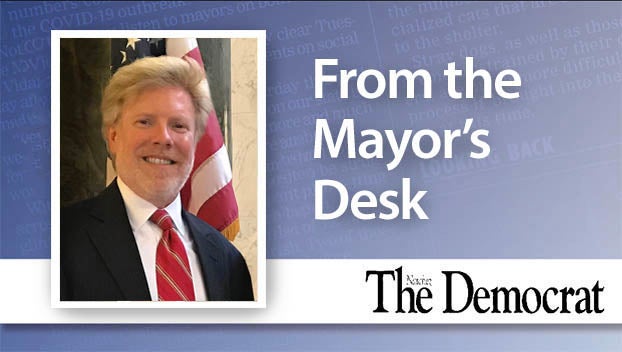Catholics pray for their dead in November
Published 12:01 am Friday, November 8, 2019
The month of November is observed in the Roman Catholic Church as a time for remembering and praying for deceased loved ones. That does not mean that these are not remembered at other times. This tradition has grows out of the Catholic belief that at the time of one’s death a person is judged as worthy of heaven or as deserving of hell. Many will go directly to life with God but some, although destined for heaven, may not yet be fully ready to live with the all-holy God, and his angels and saints. They may still have personality defects, such as selfishness, greed, anger, jealousy, lust, hatred etc. that causes them to need purification.
This process of cleansing or purification in Catholic circles is referred to as purgation or purgatory. There is no clear understanding of the nature of this cleansing nor of how long it takes. This purgation might simply come from a person’s face-to-face (I Cor. 13:12) encounter with Jesus after death, and a person’s self awareness then that she/he has not grown completely beyond their selfishness, greed, lust, anger, jealousy, etc. In that encounter with Jesus, a person’s whole life — the good and the evil — is revealed in all its fullness, and the person recognizes and embarrassingly so, the need for purification and cleansing.
Many images have been used to describe the purification process such as a purifying fire, a time of suffering, a place of suffering. But concepts such as place and time are not applicable in life beyond this life. Therefore, we must think of purgation more as a process or experience. Those in the purgation process know they are destined for heaven after they undergo purification. Those condemned to hell at the judgment after death are forever excluded from heaven. The Old Testament (2 Macc. 12:38-46) tells how Judas Maccabeus had sacrifices offered for the dead “that they may be freed from sin,” and “it is a holy and pious thought to pray for the dead.”
Furthermore, those in the purgation process cannot help themselves, and they depend on the prayers and good deeds of the Church and friends who are still alive. The Catholic belief is that prayers on behalf of another person work, and good deeds are meritorious and can also be applied to another person, including a loved one who has died. As a consequence of that belief, Catholics designate the month of November each year to pray for and to do works of charity that can help deceased who are undergoing the process of purification or purgation.
In many Catholic churches, including St. Mary Basilica and Assumption, church members are invited to list their deceased loved ones so that these can be prayed for by congregation members throughout the month of November. Because the formal prayer of the Church, the Mass, is seen as the highest form of prayer, parish members sometimes ask that a specific Mass be prayed for a deceased loved one. Such a Mass may be celebrated on weekdays or on Sundays. Church members are also encouraged to pray regularly for deceased loved ones. November 2nd each year, known as the Feast of the Holy Souls, is designated as a day of prayer for the deceased. The Masses celebrated on this day are done for the benefit of those who are deceased.
Another way that Catholics remember and pray for their deceased loved ones is to visit their graves, pray there for them, and/or bring flowers. Some church members also do good deeds in the name of a deceased or a number of deceased loved ones. These good deeds could include helping a neighbor or needy person, working at the Stewpot, Habitat for Humanity, Catholic Charities or any helping agency, or making a donation to one of these organizations.
In Natchez the Catholic community each year on the first Sunday of November holds a cemetery procession in the Natchez City Cemetery. The procession, a prayerful walk that takes about 30 minutes, begins at the original Catholic site (Plot 1) and proceeds to the new Catholic site, Catholic Hill. During the procession the congregation of about 75-90 church members pray the rosary, listen to a biographical sketch of a deceased family member and pray publicly for each church members who has died since the previous November (31 individuals since November 2018). This year the cemetery procession was held on November 3, and the biographical sketch was led by John Grady Burns and focused on John Davis, one of his relatives. The tradition of the cemetery procession began in 1861 and has continued each year with the exception of the Civil War years.
The Rev. David O’Connor is the retired pastor of St. Mary Basilica.




